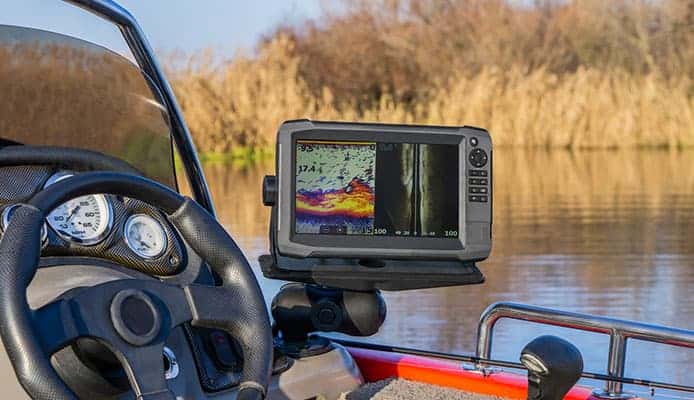
-
1.
-
2.
-
3.
-
4.
-
5.
-
6.
-
7.
-
8.
-
9.
-
10.
The use of fish finders was usually reserved to anglers on boats, since the only options available where the ones that required a transducer to be mounted on a hull. Nowadays, however, the technology has come far enough to allow shore anglers to benefit from this innovation as well. The best castable fish finders combine the effectiveness of a powerful sonar with small size and portability, so you can carry them with you wherever you go.
Peering under the surface to have a look at what is going on is a tremendous advantage for fishermen, and the best casting fish finder lets you do just that even if you’ve only set out with your rod and a couple of lures. In this article we have compiled reviews of the top rated casting fish finders that are available today, so you can choose the best of the best and head out for a successful hunt.
OUR TOP PICK
Deeper PRO
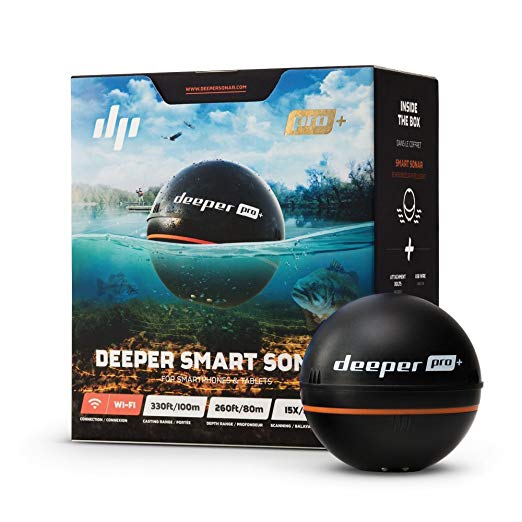
- Stand Out Features - Why We Love It
- In-built GPS
- Can create bathymetric maps from shore
- Two width scanning beams
Casting range: 330 feet
Scanning depth range: 260 feet
Weight: 3.5 ounces
EDITORS CHOICE
iBobber Wireless
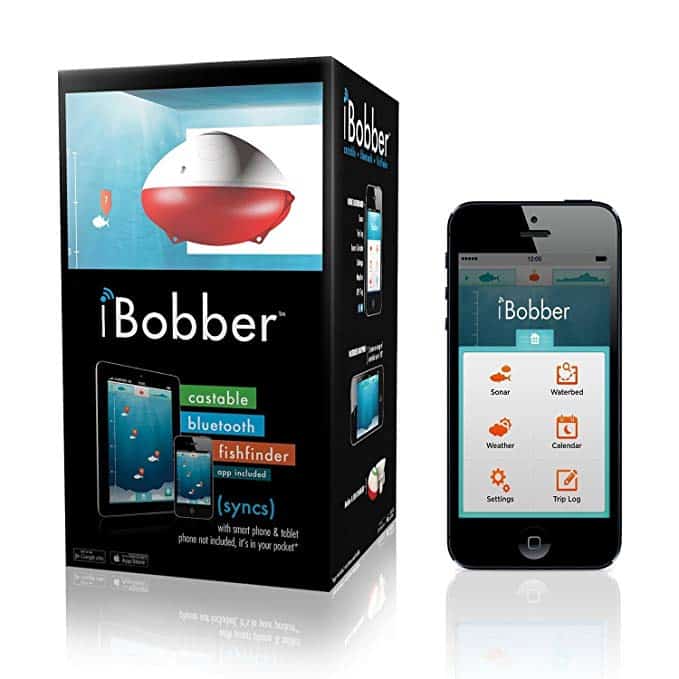
- Stand Out Features - Why We Love It
- Usable as a bobber or remote fish finder
- Compatible with iOS and Android
- Excellent battery life
Bluetooth range: 100 feet
Scanning depth range: 135 feet
Weight: 0.16 ounces
BEST VALUE
LUCKY
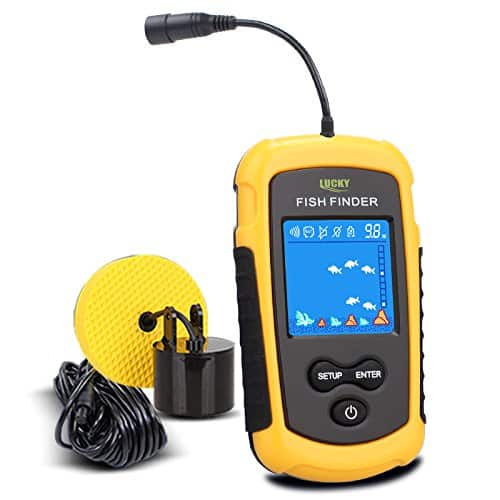
- Stand Out Features - Why We Love It
- Very versatile with five different sensitivity options
- Easy to use, perfect for beginners
- Well contained price
Sonar frequency: 200kHz
Scanning depth range: 3 to 328 feet
Weight: 1.1 pounds
Joylog
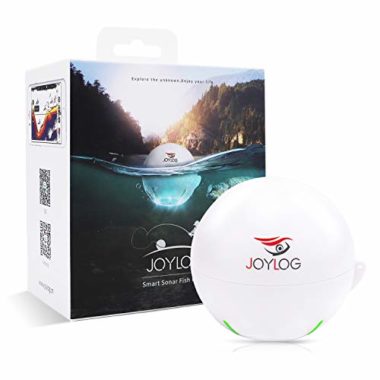
- Stand Out Features - Why We Love It
- Powerful sonar in lightweight package
- Excellent connectivity
- Automatic start up and shut down
Sonar frequency: 125kHz
Scanning depth range: 0.6-40 metres
Weight: 0.51 pounds
Deeper PRO Smart Sonar
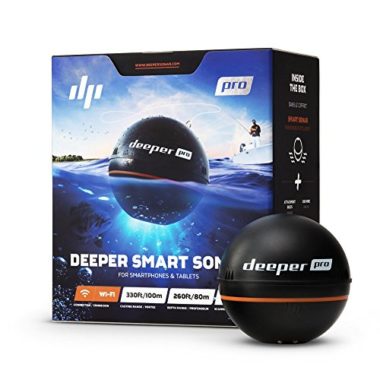
- Stand Out Features - Why We Love It
- Dual sonar beam
- Scans are backed up to the Cloud
- Can see targets as small as 1.3cm
Sonar frequency: 90 or 290 kHz
Scanning depth range: 260 feet
Weight: 3.5 ounces
FishHunter
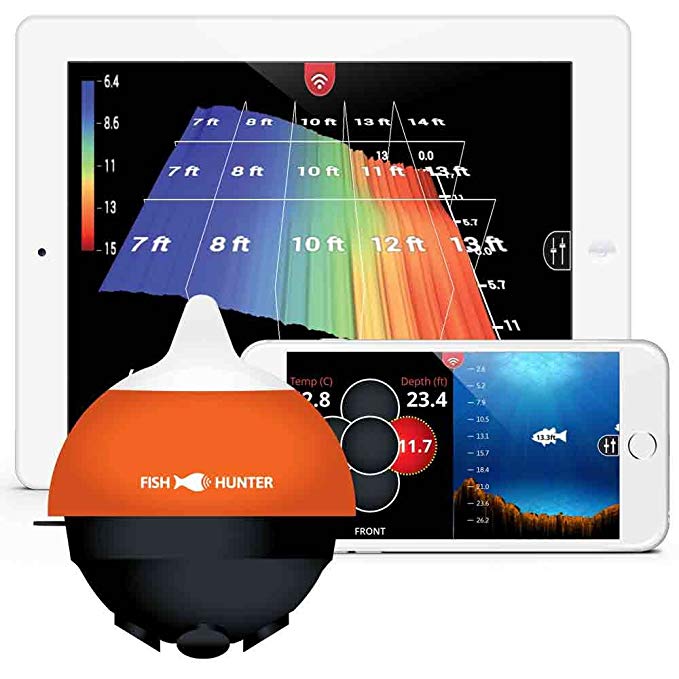
- Stand Out Features - Why We Love It
- Five transducers with three available frequencies
- Only fish finder with 3D mapping
- Very fast wifi connectivity
Sonar frequency: 381, 475 or 675 kHz
Scanning depth range: 160 feet, 100 feet in icy water
Weight: 7.2 ounces
Vexilar SonarPhone
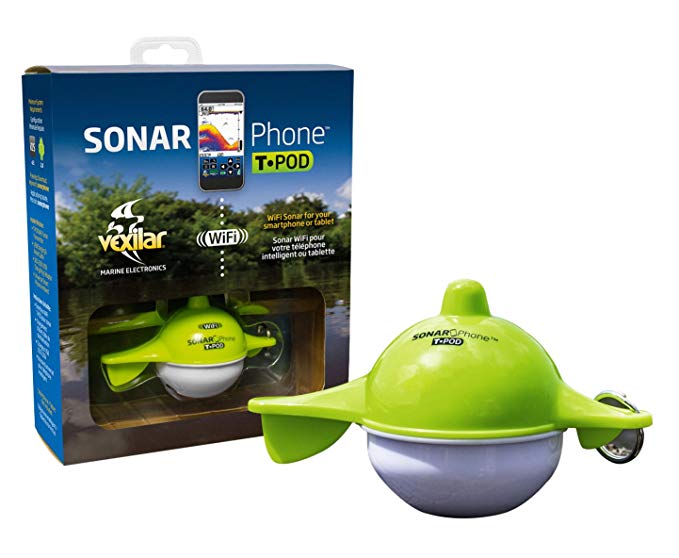
- Stand Out Features - Why We Love It
- Simple and easy to use setup
- Very wide sonar cone
- Lightweight and perfect for small boats
Sonar frequency: 200kHz
Scanning depth range: 240 feet
Weight: 14.1 ounces
Deeper Start
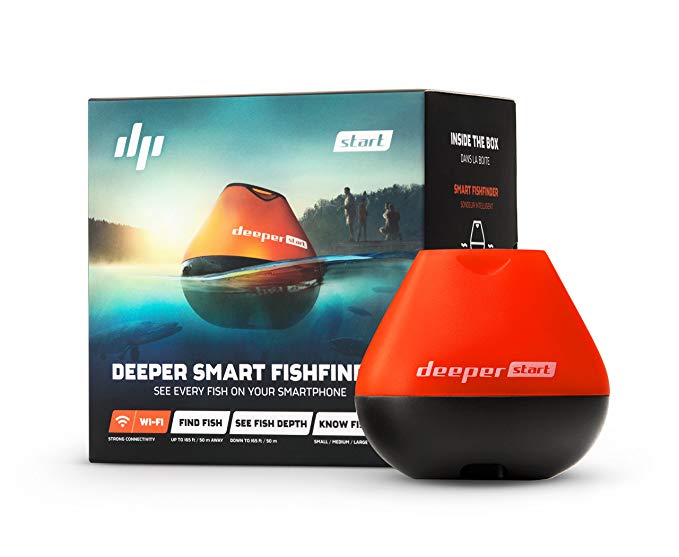
- Stand Out Features - Why We Love It
- Basic model that provides all the basic features
- Excellent Wi-Fi connectivity
- Quick to charge and long lasting battery
Casting range: 165 feet
Scanning depth range: 165 feet
Weight: 2.3 ounces
Lowrance FishHunter PRO
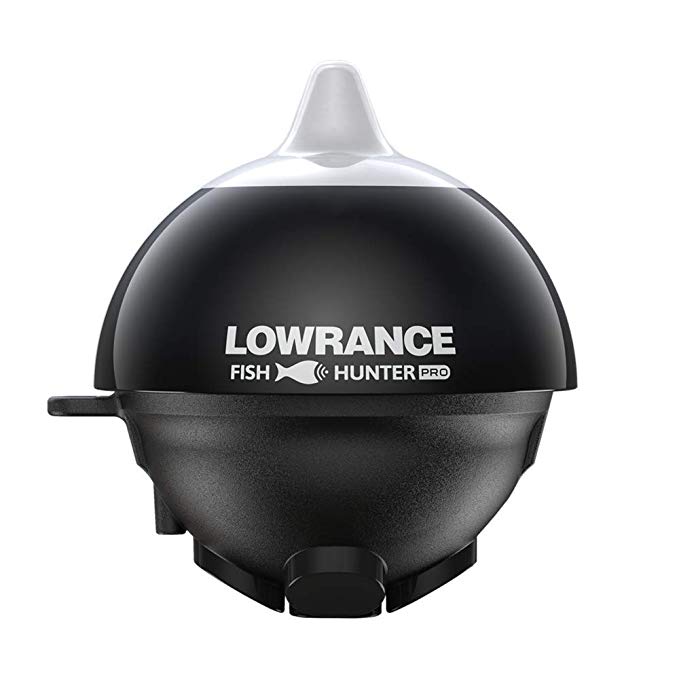
- Stand Out Features - Why We Love It
- Features five tri-frequencies transducers
- Integrated LED light
- Allows you to create custom maps
Casting range: 150 feet
Scanning depth range: 150 feet
Weight: 0.34 pounds
Venterior
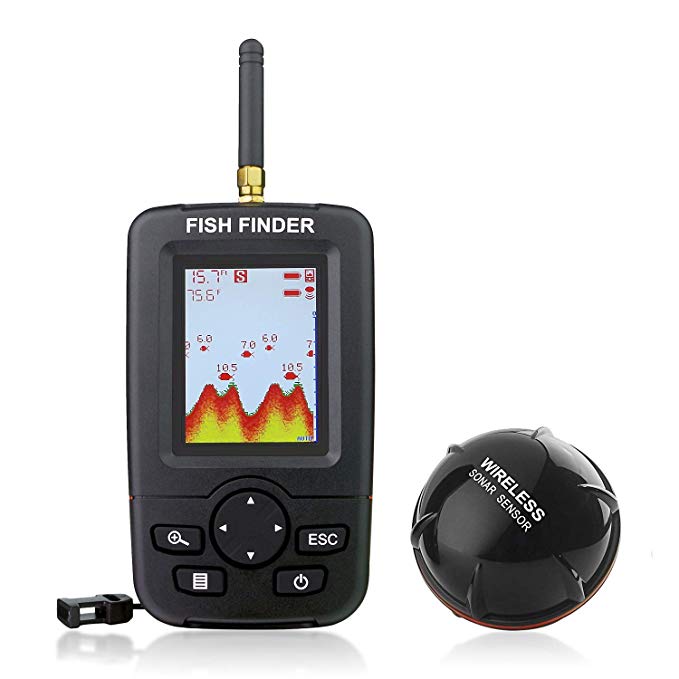
- Stand Out Features - Why We Love It
- Very good price for the features provided
- Easy to read LCD screen on receiver
- Uses regular AAA batteries
Casting range: 131 feet
Scanning depth range: 2.6-118 feet
Sonar frequency: 125 kHz
How To Choose A Castable Fish Finder – Buying Guide
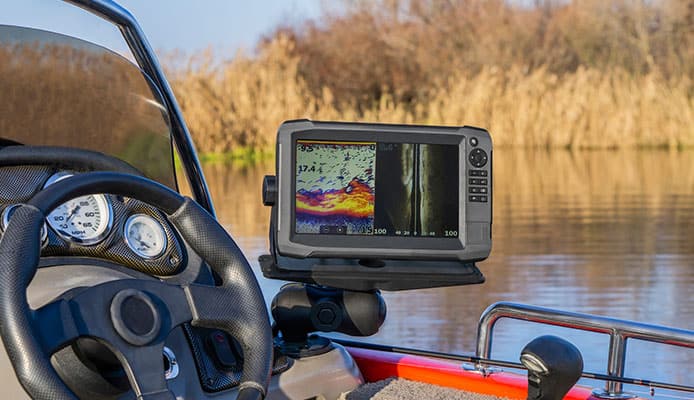
GPS Capabilities
A GPS might not seem like a necessary feature for shore fish finders, but once you use one its usefulness will quickly become apparent. What it does is allow you to map the water you are fishing in so you can better plan your strategy. Another useful application is being able to mark a good fishing area you want to return to later, so you won’t have to waste time looking for it again.
Range
The range indication refers to how far away you can cast your fish finder and still be able to connect with it. Most models work well within the 130 feet range, which usually proves to be more than enough, but pay attention to the range if you think your fishing habits might call for more power. Also, Wi-Fi usually holds better than Bluetooth when long distances are involved.
Versatility
Castable fish finders are aimed mostly at shore anglers, but they can be used in a variety of other situations as well. Their small size and portability make them excellent companions for those fishing from a kayak. Some models are also designed to handle fishing on the ice, even if this usually reduces the depth at which they can scan.
Connectivity, Performance and Range
The two main systems used by wireless fish finders to transmit data are Wi-Fi and Bluetooth connectivity. Both methods have their advantages, as anyone who owns a smartphone will know, but as far as fish finders are concerned the main difference is in their effective range. In general, Wi-Fi finders tend to be able to connect up to longer distances, even stretching to 300 feet, while Bluetooth is reliable up to 130 feet on average.
Frequency and Depth
When it comes to sonar frequencies, the goal is to seek a balance between accuracy and depth. Higher frequencies will provide images that are more precise but will not be able to cover wide areas or penetrate very deep in the water. Lower frequencies can provide a reading of deeper waters but without the same precision. Some fish finders employ a combination of frequencies to provide you with the best average results, or let you choose which one you want depending on the situation.
You might also like:Side Imaging Fish Finders
Sonar Method
The most basic sonar display method, one that all fish finders will provide, is the 2D view. This gives you a side-scrolling view of the sea floor, but without much information about distance. More advanced finders can generate bathymetric maps, which combine GPS data with depth measurements to fill in some of the information on depth that might be missing from a 2D scan. The best of the best is 3D mapping, that gives you the most complete set of data available, but this option is only available on the most advanced models.
Display
A good display is an integral part of a fish finder. It can be the display on your phone if you want to keep things light or the one on a receiver. In any case it needs to be bright enough to be seen in the midday sun and detailed enough to clearly display all the relevant information needed. Refresh rate and contrast are also important features that need to be there for you to get the most out of your finder.
Power And Frequency
In an age of smart devices, more and more fish finders are becoming easily chargeable via USB, just like you would do with a smartphone. This has considerably increased the ease of use of certain setups. If your fish finder does not yet have this capability, it is probably also easily fueled by a set of simple batteries. The battery life of a fish finder will depend on the frequency you use it at. The higher the frequencies and the faster the battery drain, so be sure to have a power bank or some extra batteries with you when you go out.
FAQs
Q: Why Do I Need A Fish Finder?
A fish finder will let you analyze the water in front of you to determine the position of the fish you are trying to catch as well as provide you with details about the underwater environment. This can give you a tremendous advantage in your hunt and enable you to choose the best suited strategy for the situation you find yourself in.
Q: What Is The Difference Between A Static And Castable Fish Finder?
A static fish finder is usually attached under the boat you are using and they send a signal thanks to a transducer which you can then look at on a screen. Castable fish finders, on the other hand, are smaller and more portable devices which can be brought with you wherever you go. They connect wirelessly to your phone or to a receiver so you can monitor the water around you.
Globo Surf Overview
As fishing becomes more and more technical, more and more products materialize on the shelves. In our castable fish finder reviews we have presented you with the best options on the market today, to guide you through your choice and ensure many successful outings.


